|
For many anglers, the thrill of fly fishing from a drift boat is unparalleled. The gentle sway of the river, the artful cast of a line, and the anticipation of a catch all culminate in an experience that's both serene and exhilarating. But mastering the art of rowing a drift boat is essential to ensure a seamless and enjoyable fishing expedition.
Beginning with Trailering and Launching Preparing for a day on the river begins with securing the drift boat onto a trailer. Properly hitching and ensuring the boat is securely attached is crucial for a safe journey. Always check local regulations for trailer speed limits and road rules. Arriving at the river, patience is key when launching the boat. Take your time and be mindful of others at the launch site. A smooth launch sets the tone for the day ahead. Etiquette on the Water Respect for other anglers, boaters, and the environment is fundamental. Avoid crowding other fishermen and maintain a safe distance on the water. Practicing good river etiquette contributes to a harmonious fishing experience for everyone. Anchoring and Rowing Tips ( YOUTUBE VIDEO ABOVE) A well-placed anchor is a fly fisherman's ally, allowing for precise positioning for optimal casting. Master the art of anchoring by understanding river currents and selecting suitable anchor points. When it comes to rowing, finesse and technique reign supreme. Start by getting accustomed to the oars' feel and response. Use shorter, controlled strokes to navigate through varying currents, and always keep an eye on the upcoming river features. Prioritizing River Safety Safety is non-negotiable when on the water. Equip yourself with a personal flotation device (PFD) and ensure all passengers have theirs on as well. Understanding river currents, potential hazards, and weather conditions is imperative for a safe outing. Navigating River HazardsFrom submerged rocks to swift currents, rivers present an array of hazards. Learn to read the water, identifying safe passages and potential obstacles. Stay vigilant, especially in changing conditions, to avoid mishaps. Safety Gear in the Boat Besides PFDs, carry essential safety gear such as a first aid kit, a throw bag, a whistle, and emergency supplies. These items can be invaluable in unforeseen circumstances and are indispensable for any responsible angler. Rowing for Fishing: A Skill to MasterThe art of rowing for fishing goes beyond maneuvering the boat; it's about enhancing the fishing experience. A skilled rower can position the boat optimally for the angler, accounting for wind, currents, and the best casting angles. Rowing a drift boat for fly fishing is a multifaceted skill that combines technical prowess with a deep appreciation for the natural environment. Mastering the nuances of rowing and understanding river dynamics ensure not only a successful fishing trip but also a safe and enjoyable one for all. Capturing the Perfect Fly Fishing Moment: Photography Tips and Tricks
Hey there, fellow fly fishing enthusiasts! You know that magical feeling when you're out on the water, casting your line, and connecting with nature? Well, what if I told you that you could capture those moments forever through the lens of your camera? Yes, that's right! Let's talk about the art of fly fishing photography and how you can immortalize those incredible moments on film. 1.Gear Matters, But It's Not Everything You don't need the most expensive camera gear to take stunning fly fishing photos. Sure, a high-end DSLR or mirrorless camera can do wonders, but even your smartphone can capture some breathtaking shots. What truly matters is how you use the gear you have. 2.Lighting – Nature's Best Friend One of the secrets to amazing photography is good lighting. Early morning and late afternoon usually offer the best natural light for capturing the beauty of fly fishing. The soft, warm glow enhances the scene and adds a magical touch to your photos. 3. Capture the Action and Emotion Don't just focus on the fish! While that's often the goal, the emotions, concentration, and movements of the angler are equally captivating. Try to capture the anticipation in their eyes, the grace of their cast, and the thrill of the catch. 4.Experiment with Angles and Perspectives Get creative! Don't just shoot from eye level. Try different angles – get low to the water, climb up high, or shoot from unique vantage points. Changing perspectives can add depth and uniqueness to your photos. 5.Focus on Details Sometimes, the most beautiful moments lie in the smallest details. Capture the intricate patterns of the flies, the ripples on the water, or the worn-out fishing gear. These details often tell compelling stories. 6.Patience is Key Just like in fly fishing, patience is crucial in photography. Wait for the right moment, observe the surroundings, and be ready to click that shutter when the magic happens. Sometimes, the best shots come to those who wait. 7. Post-Processing Magic Editing can enhance your photos significantly. Whether it's adjusting exposure, contrast, or adding a slight vignette, simple edits can make your images pop. But remember, don't overdo it – subtlety is often the key to great editing. 8.Share Your Story Every photo has a story behind it. Share your experiences, the challenges you faced, the thrill of the catch, or the serenity of the surroundings. Let your audience connect with your journey through your images. So, there you have it – some tips and tricks to elevate your fly fishing photography game. Remember, the most important thing is to enjoy the moments you're capturing. So, grab your gear, head to your favorite fishing spot, and let your camera capture the magic of fly fishing! Happy clicking! Embarking on the captivating journey of fly tying is a thrilling endeavour for any angler. Crafting your own flies adds a personalized touch to your fishing experience, and it all begins with assembling the right tools. Let's dive into the 10 indispensable items you need to start tying flies and explore their significance in creating the perfect fly.
1. **Vise: The Heart of Fly Tying** At the core of your fly tying setup lies the vise. This ingenious tool holds the hook firmly, allowing you to work your magic with precision. Invest in a quality vise that offers stability and adjustability to accommodate various hook sizes. 2. **Bobbin: Thread Control** The bobbin is your fly tying pen, controlling the thread with finesse. Opt for a bobbin with adjustable tension to maintain consistent wraps, ensuring the durability of your flies. 3. **Scissors: Cutting Edge Precision** A reliable pair of scissors is indispensable. Precision cuts are crucial for creating neat, effective flies. Look for scissors with a fine point to navigate intricate patterns with ease. 4. **Thread: The Invisible Bond** The thread is the invisible glue that holds your fly together. Choose threads in various colors and thicknesses, ensuring you have the right one for each pattern. A strong, durable thread is essential for securing materials in place. 5. **Hooks: The Foundation of Success** Selecting the right hook sets the foundation for a successful fly. Different styles and sizes cater to various fishing scenarios. Understanding the purpose of each hook type is key to tailoring your flies to specific situations. 6. **Dubbing: Adding Flare to Flies** Dubbing is the material that adds life and texture to your flies. With a vast array of colors and textures available, experimenting with dubbing allows you to create realistic imitations of aquatic insects. 7. **Hackle: Bringing Flies to Life** Hackle, often sourced from feathers, imparts lifelike movement to your flies. Whether dry flies or nymphs, the right hackle can mimic the motion of insects on the water's surface, making your flies irresistible to fish. 8. **Beads and Eyes: Adding Weight and Realism** Beads and eyes serve both functional and aesthetic purposes. They add weight to your fly, influencing its sink rate, while also enhancing its visual appeal. Experimenting with different sizes and colors can yield enticing results. 9. **Wire: Reinforcing Durability** Adding wire to your flies reinforces durability and adds weight. Wire can be used to create ribbing for nymphs or to secure materials in place. It's a versatile component that enhances the longevity of your creations. 10. **Whip Finish Tool: The Final Touch** The whip finish tool is the finishing touch to your masterpiece. It secures the thread, ensuring your fly remains intact during those vigorous battles with feisty fish. Mastering the whip finish is an art in itself, adding a professional touch to your creations. As this list can seem daunting, epsecially when you move into the material side of things, that is why we have designed fly tying kits to make this process super easy for you ! Can can choose sampler packs of individual patterns, or you can join us for a whole season of fly tying, to learn how to tie many patterns, without dishing out the big bucks on bulk material that you may never use! Click the button below to get started! Fly fishing is an artful pursuit that offers anglers a unique connection with nature and a thrilling challenge. While various techniques are employed to catch different species of fish, dry fly fishing stands out as an elegant and exciting approach. In this blog post, we'll delve into the world of dry fly fishing, providing you with valuable tips and techniques to help you master this captivating aspect of the sport.
Understanding Dry Fly Fishing Dry fly fishing is a method where an artificial fly is presented on the water's surface to mimic a real insect. Unlike nymph or streamer fishing, dry fly fishing involves enticing fish that are actively feeding on the surface. To be successful, it's essential to understand the insects fish are targeting and to present your dry fly as a convincing meal. Tips for Selecting the Right Dry Fly
Dry fly fishing is a captivating and rewarding form of fly fishing, allowing anglers to witness fish rising to the surface and taking their fly. By understanding the insects, selecting the right dry fly, and mastering the presentation techniques, you can increase your success and enjoyment on the water. Remember that dry fly fishing is not just about catching fish but also about appreciating the beauty of nature and the thrill of the chase. So, grab your gear, practice your casting, and head to the water to master the art of dry fly fishing. With patience and persistence, you'll be well on your way to becoming a skilled surface angler. Competitive Fly Fishing: A Controversy in the Serene World of Angling
Fly fishing, with its graceful casts and serene waters, has always been associated with relaxation and communion with nature. Anglers typically head to the riverbanks or lakesides seeking tranquility, not competition. However, in recent years, the world of fly fishing has witnessed the emergence of competitive events that pit angler against angler in a quest for supremacy. This development has sparked a vigorous debate over whether competitive fly fishing belongs in this traditionally leisurely pastime and whether it tarnishes the "why" people turn to fly fishing in the first place. Proponents of competitive fly fishing argue that it brings a fresh and exciting dimension to the sport. They contend that it creates a platform for showcasing the skills and knowledge acquired by seasoned anglers while introducing new enthusiasts to the art of fly fishing. Advocates believe that competition encourages the development of innovative techniques and equipment, ultimately benefitting the entire fly fishing community. On the other hand, there is a significant faction that believes that competitive fly fishing goes against the very essence of what the sport represents. Fly fishing is not about the size of the catch or the number of fish in the bag; it's about the experience, the connection with nature, and the meditative joy of the casting. Competitive fly fishing, they argue, prioritizes the numbers over the experience, turning an art into a race, and compromising the tranquility that draws people to the water's edge. One of the most vocal criticisms of competitive fly fishing is the potential harm it inflicts on the environment. In a quest to amass high scores, competitive anglers might overfish and harm local ecosystems. They may disturb natural habitats, increasing the risk to delicate fish populations. The sport's traditional emphasis on catch-and-release, which fosters conservation, can be abandoned in the heat of competition. Moreover, the competitive aspect may dissuade newcomers who are initially drawn to fly fishing as a reprieve from the hustle and bustle of modern life. If the sport becomes highly competitive, novices may feel intimidated or unwelcome, thwarting the gentle introduction to angling that fly fishing is celebrated for providing. We should be nurturing the next generation of environmentally conscious anglers, not chasing them away with cutthroat competition. But proponents argue that competitive fly fishing doesn't have to be the antithesis of the sport's traditional values. It can serve as an opportunity for experienced anglers to share their knowledge and passion with newcomers, fostering mentorship and camaraderie. Some competitions even emphasize ethical angling and conservation, showing that it's possible to balance competition and environmental responsibility. In conclusion, the question of whether there should be competitive fly fishing ultimately depends on one's perspective and priorities. It is undeniable that competitive fly fishing offers an exciting dimension to the sport and can foster camaraderie and mentorship among anglers. However, it also raises concerns about the potential harm to the environment and the transformation of fly fishing into a race rather than a serene and contemplative activity. The "why" of fly fishing is deeply personal, and for many, it's about the escape from the hectic pace of modern life, a connection to nature, and the pursuit of serenity. While competitive fly fishing may have its place, it must be carefully managed to ensure it doesn't compromise the core values and spirit of the sport. Ultimately, the responsible growth of competitive fly fishing should be guided by the preservation of the natural environment, the encouragement of ethical angling, and the inclusive welcome of newcomers. Mastering Western Trout Streams: Top 3 Fly Patterns and When to Use Them
Trout fishing on western streams is an angler’s paradise, offering pristine waters and challenging conditions. Whether you’re a seasoned pro or a novice, selecting the right fly patterns is crucial for a successful day on the water. In this article, we’ll delve into the top three dry flies, nymph patterns, and streamers for western trout streams, along with when and how to use them effectively. Top 3 Dry Flies: 1. Elk Hair Caddis: The Elk Hair Caddis is a go-to pattern for western trout streams, thanks to its versatility and effectiveness. Use it during hatches, especially when you spot caddisflies fluttering around. The Elk Hair Caddis mimics these insects perfectly and is equally effective in fast and slow waters. 2. Royal Wulff: When trout are feeling picky and won’t rise for anything else, tie on a Royal Wulff. This high-riding pattern imitates a variety of mayflies and attractors. It excels in fast currents and rough waters and can be used as an indicator fly in a dry-dropper setup. 3. Parachute Adams: This classic pattern is a must-have in your fly box. It mimics a range of mayflies, making it suitable for various situations. When trout are feeding on emergers or delicate rises, the Parachute Adams is your best bet. Its high visibility and natural profile make it an all-time favorite. Top 3 Nymph Patterns: 1. Pheasant Tail Nymph: The Pheasant Tail Nymph is a staple in the world of nymph patterns. It’s an excellent representation of mayfly nymphs and works well in slow, deep pools. Use it during the early morning or late afternoon when trout are feeding near the bottom. 2. Hare’s Ear Nymph: This pattern closely imitates caddisfly and stonefly nymphs, making it perfect for streams with these insects. Fish it near the riverbed, letting it drift naturally. It’s particularly effective during a caddis or stonefly hatch. 3. Copper John: When you need a heavy nymph to reach the depths quickly, the Copper John is the go-to choice. This flashy fly has a bead head, making it suitable for fast-flowing rivers. It’s incredibly effective during the summer months when trout seek shelter from the heat in deeper pools. Top 3 Streamer Patterns: 1. Woolly Bugger: The Woolly Bugger is a classic streamer pattern that mimics leeches, minnows, and other baitfish. It’s a great choice in low-light conditions or when trout are feeling aggressive. Fish it in deep pools and undercut banks, imparting a jerky, erratic motion to trigger strikes. 2. Sculpin Patterns: Sculpins are a common prey for trout in western streams, and sculpin patterns imitate these small fish effectively. Use them in rocky, structure-filled waters and strip them along the bottom. These patterns are perfect for catching larger trout lurking in prime feeding spots. 3. Zonker Streamer: The Zonker is a rabbit-strip-based streamer that provides a lifelike action in the water. It’s an excellent choice when you want to mimic baitfish or sculpins. Cast it near submerged rocks or under overhanging vegetation and strip it back for an enticing presentation. Mastering western trout streams requires a diverse selection of fly patterns and the knowledge of when to use them. The top three dry flies, nymph patterns, and streamers mentioned here cover a range of situations, ensuring you’re prepared for whatever conditions you encounter on these beautiful and challenging waters. Next time you head to a western trout stream, be sure to pack your fly box with these essential patterns to increase your chances of a successful day on the water. The Top 5 River Lunches While Fly Fishing and Why They're Essential When you're out on the river, pursuing the elusive catch through fly fishing, sustenance becomes essential. It's not just about the thrill of the sport but also the need to refuel and recharge during a day of angling. The right river lunch can make a significant difference, ensuring you stay energized and focused. In this article, we'll explore the top 5 river lunches while fly fishing and why they're essential for an angler's success. 1. The Classic Sandwich One of the timeless favorites of anglers is the classic sandwich. Why? It's the epitome of convenience and versatility. Sandwiches are easy to prepare, and you can customize them to suit your taste. Whether it's a hearty turkey and cheese combo or a veggie-packed delight, sandwiches offer a wide range of options. More importantly, they're highly portable and can be consumed without the need for utensils, making them a top choice for a river lunch. 2. Protein-Packed Snacks: Fly fishing can be physically demanding, and to keep your energy levels up, you need a lunch that provides a substantial protein boost. This is where protein-packed wraps shine. Whether you fill them with grilled chicken, turkey, or hummus and loads of fresh veggies, wraps offer a balanced and filling meal. What's more, they're less prone to getting soggy than traditional sandwiches, making them a reliable choice for a long day on the river. 3. Nutrient-Rich Trail Mix: To sustain your energy throughout the day, you need compact, high-energy snacks, and trail mix fits the bill perfectly. A good trail mix combines the goodness of nuts, dried fruits, and even a touch of chocolate for that quick energy spike. The mix of protein, healthy fats, and natural sugars in trail mix helps to keep your energy levels stable. It's lightweight, easy to carry, and doesn't require any special storage conditions, which makes it ideal for river lunches. 4. Hydration Station - Water and Electrolyte Drinks: Staying hydrated while fly fishing is absolutely crucial. The physical activity and exposure to the elements can quickly lead to dehydration. This is where water and electrolyte drinks come to the rescue. Water keeps you hydrated and is the foundation of any river lunch. Electrolyte drinks, on the other hand, help replenish the essential minerals your body loses through sweat. By maintaining proper hydration, you not only boost your performance but also safeguard your health on the river. 5. Fresh Fruits and Veggies: For a well-rounded river lunch, include fresh fruits and veggies. These provide essential vitamins and minerals to keep you going. Fruits like apples, oranges, or grapes not only hydrate but also provide a natural source of energy. Slicing up some fresh vegetables, like carrots, bell peppers, or cucumbers, and pairing them with a dip can be a refreshing snack to break the monotony of typical river fare. These options are light on your stomach, making them ideal for a day of angling. Why These Lunches Are Essential: The importance of choosing the right river lunches can't be overstated. These meals play a crucial role in maintaining your energy levels and focus throughout the day. Whether you prefer the classic convenience of sandwiches, the protein-packed goodness of wraps, nutrient-rich trail mix, or the essential hydration from water and electrolyte drinks, these choices can significantly impact your fly fishing experience. By planning your river lunches, you can optimize your performance and make the most of your time on the river. In the world of fly fishing, the right river lunch is not just a matter of preference; it's an essential aspect of ensuring a successful and enjoyable day on the water. By incorporating the top 5 river lunches into your angling routine, you'll be better prepared, both mentally and physically, for the challenges that the river throws at you. So, the next time you're planning a fly fishing trip, remember that what you bring to the riverbank can make all the difference in the world. While many Fly Fishing enthusiasts are content to purchase pre-made flies for their fishing adventures, there's an art and science to crafting your own - a practice known as fly tying. In this blog post, we'll delve into the reasons why it's crucial for fly fishing anglers to explore the world of fly tying and how it can enhance their knowledge of entomology, patterns, and the practical use of flies.
The Gateway to Entomology: For fly fishing anglers, understanding the intricacies of entomology is like unlocking a hidden treasure chest of knowledge. Fly tying provides a hands-on education in the world of aquatic insects and their life cycles. As you meticulously select materials, imitate insect forms, and replicate natural colors, you develop a deep appreciation for the delicate balance of aquatic ecosystems. Fly tying encourages you to study aquatic insects up close, dissect their characteristics, and replicate them in fly patterns. You'll quickly find that there's an immense variety of insect species in freshwater environments, each with its own unique appearance and behavior. This newfound knowledge not only enriches your fly tying skills but also sharpens your ability to "match the hatch" - a critical aspect of successful fly fishing. Cracking the Code of Patterns: Patterns in fly tying are not merely arbitrary designs; they're the result of years of observation, experimentation, and adaptation. Learning to tie various fly patterns allows you to explore the history and evolution of these designs. Understanding why certain patterns exist and why they are effective is a fascinating journey into the world of angling tradition and innovation. Each pattern has a story, a reason for its creation, and a specific application. Whether you're tying a classic dry fly like the Adams or a modern nymph pattern like the Pheasant Tail, delving into the history and intricacies of these flies can deepen your appreciation for the sport. As you explore different patterns, you'll also gain insight into the principles of design, proportion, and presentation, all of which are crucial to effective fly fishing. Bridging the Gap ; Theory to Practice: While fly tying offers valuable insights into entomology and pattern design, there's no substitute for on-the-water experience. To truly grasp the practical use of the flies you tie, you must take them to the river and put them to the test. This dynamic interaction between tying and fishing creates a symbiotic relationship that continually improves both skills. When you fish with your own creations, you gain firsthand knowledge of how different patterns behave in various water conditions and under different circumstances. You'll learn which flies excel in fast-flowing streams, stillwater lakes, or spring creeks. This intimate connection with your flies allows you to make subtle adjustments to match the specific needs of each fishing scenario. Moreover, fishing your own flies fosters a sense of accomplishment and ownership. The excitement of catching a beautiful trout on a fly you meticulously tied yourself is unparalleled. It deepens your connection with the sport and creates a lasting bond between angler, fly, and fish. Fly tying is not just a pastime for fly fishing enthusiasts; it's a gateway to a richer understanding of entomology, pattern design, and practical angling knowledge. By immersing yourself in the art of fly tying and actively using your creations on the water, you'll become a more skilled and knowledgeable angler, enhancing your overall fly fishing experience. So, pick up your vise, thread your bobbin, dig out your feathers, and embark on a journey that will not only improve your fishing but also deepen your appreciation for the world of fly fishing. Happy tying and tight lines! If you’re interested in getting into fly tying - check out Www.flyfishingbowriver.com/tnls5 First rule : Grace ❤️ Fly fishing is more than just a sport; it’s a passion that connects anglers with nature in profound ways. However, like any outdoor activity, there are rules of engagement to ensure an enjoyable experience for all. River etiquette is the cornerstone of harmonious fly fishing, and it becomes particularly important when anglers share the waters. In this blog post, we’ll delve into river etiquette, focusing on interactions between shore fishermen, drift boat fishermen, and even fellow shore anglers. Shore Fisherman vs. Drift Boat Fisherman One of the most common scenarios in fly fishing is the interaction between shore fishermen and those in drift boats. Drift boat anglers navigate the river by floating downstream, casting their lines as they go. Meanwhile, shore fishermen remain stationary, wading in the water or standing on the riverbank. So, who has the right of way in this situation? The Rule of Respect: It’s essential for both shore and drift boat fishermen to respect each other’s space. Drift boat fishermen should steer clear of shore anglers by giving them a wide berth. At the same time, shore fishermen should avoid casting directly into the path of approaching drift boats. Good communication is key. Drift boat anglers can signal their intention to pass, and shore anglers can acknowledge by making room when necessary. Shore Fisherman vs. Shore Fisherman Even when there are no drift boats involved, shore anglers must be aware of their fellow fishermen. The question of who has the right of way can be more subtle in this scenario. Arrival Time Matters: Generally, the angler who arrived at a spot first has priority. If you find a good fishing location already occupied, it’s courteous to find another spot nearby or wait your turn. However, if the first angler is willing to share, you can join them while maintaining a respectful distance. Avoid Crowding: Fishing too close to another angler can be invasive and ruin the experience for both parties. Give each other ample space to cast comfortably. If you notice someone nearby, make sure to ask if they mind sharing the area. Rotating and Sharing: It’s also common for anglers to take turns fishing from the same spot, especially when there’s limited access to prime locations. Communicate with your fellow anglers and establish a fair system for sharing the fishing spot. How Long Should an Angler Stay in One Spot? The duration of your stay in one fishing spot is a crucial aspect of river etiquette. While it’s tempting to camp out in a productive location, it’s essential to balance your success with consideration for others. Be Mindful of Others: If you’ve been in one spot for a while and notice other anglers waiting for their turn or looking for a spot, consider moving on. This gesture of courtesy ensures that everyone has a chance to enjoy the river. Rotate and Explore: Fly fishing is about exploring different sections of the river and honing your skills. Don’t limit yourself to one spot for too long. By moving around and exploring, you not only improve your fishing but also share the resource with others. In conclusion, river etiquette is the key to a positive fly fishing experience, whether you’re a shore angler or in a drift boat. Respect for fellow fishermen, communication, and a willingness to share the water are all crucial aspects of this etiquette. By following these guidelines, we can all enjoy the beauty of nature while pursuing our passion for fly fishing, leaving behind only ripples and memories. Choosing the Perfect Fly Fishing Rod: A Comprehensive Guide for New Anglers Fly fishing is a beautiful and rewarding sport, but it's essential to have the right tools, and one of the most critical pieces of equipment is your fly fishing rod. Understanding the nuances and differences in fly rods is crucial for a successful and enjoyable fishing experience. In this guide, we'll explore the key factors to consider and provide a checklist to help new anglers make informed choices. 1. Action The action of a fly rod refers to how much the rod bends when casting. There are three primary types of rod actions: - Fast Action: These rods bend primarily in the tip section. They are excellent for long-distance casting and handling larger fish. - Medium Action: These rods bend more uniformly down the rod length. They provide versatility and are suitable for a wide range of fishing conditions and species. - Slow Action: Slow-action rods bend throughout their length, offering delicate presentations and are great for small streams and light tippets. Consider the type of fishing you plan to do when choosing the rod action. Fast action for bigger fish, medium for versatility, and slow for delicate presentations. 2. Length Fly rod lengths typically range from 6 to 10 feet. Here's a general guideline for selecting the right length: - Short Rods (6-7.5 feet): Ideal for small streams and confined spaces where casting space is limited. - Medium Rods (8-9 feet): Versatile and suitable for a wide range of fishing conditions and species. - Long Rods (9-10 feet): Best for long-distance casting and for fishing in larger bodies of water. Select the length based on your fishing environment and the type of fish you'll target. 3. Size (Weight) Fly rods are classified by a weight rating, typically ranging from 1 to 12 (with 1 being the lightest and 12 being the heaviest). Here's how to choose the right size: - Lighter Weights (1-4): Ideal for small trout and panfish. - Medium Weights (5-7): Versatile and suitable for a wide range of species, including trout, bass, and smaller saltwater species. - Heavier Weights (8-12): Designed for larger species like salmon, steelhead, and saltwater gamefish. The size of the rod should match the size of the fish you intend to catch. 4. Target Fish Species Consider the specific fish species you plan to target. Different species have different preferences when it comes to fly fishing rods. For example: - Trout: A medium-action rod in the 4-6 weight range is ideal. - Bass: A medium to fast-action rod in the 6-8 weight range is suitable. - Salmon or Saltwater Species: Opt for a heavy-duty rod in the 8-12 weight range. Fly Rod Checklist for New Anglers Now that we've covered the nuances of fly fishing rods, here's a handy checklist to ensure you make the right choice: 1. Determine Your Fishing Environment: Consider where you'll be fishing most often, such as small streams, rivers, or large lakes. 2. Identify Your Target Species: Know the type and size of fish you want to catch. 3. Select the Right Action: Choose a rod action that suits your fishing style and target species. 4. Choose the Appropriate Length: Match the rod length to your fishing environment and casting preferences. 5. Pick the Right Size (Weight): Select a rod size that aligns with the species you're pursuing. 6. Test Before Buying: Whenever possible, cast with different rods to see which one feels most comfortable. 7. Consider Your Budget: Fly rods come in various price ranges, so choose one that fits your budget without compromising quality. In conclusion, selecting the perfect fly fishing rod requires careful consideration of action, length, size, and target species. With this checklist, new anglers can confidently choose a rod that enhances their fishing experience and increases their chances of success on the water. Happy fishing! |
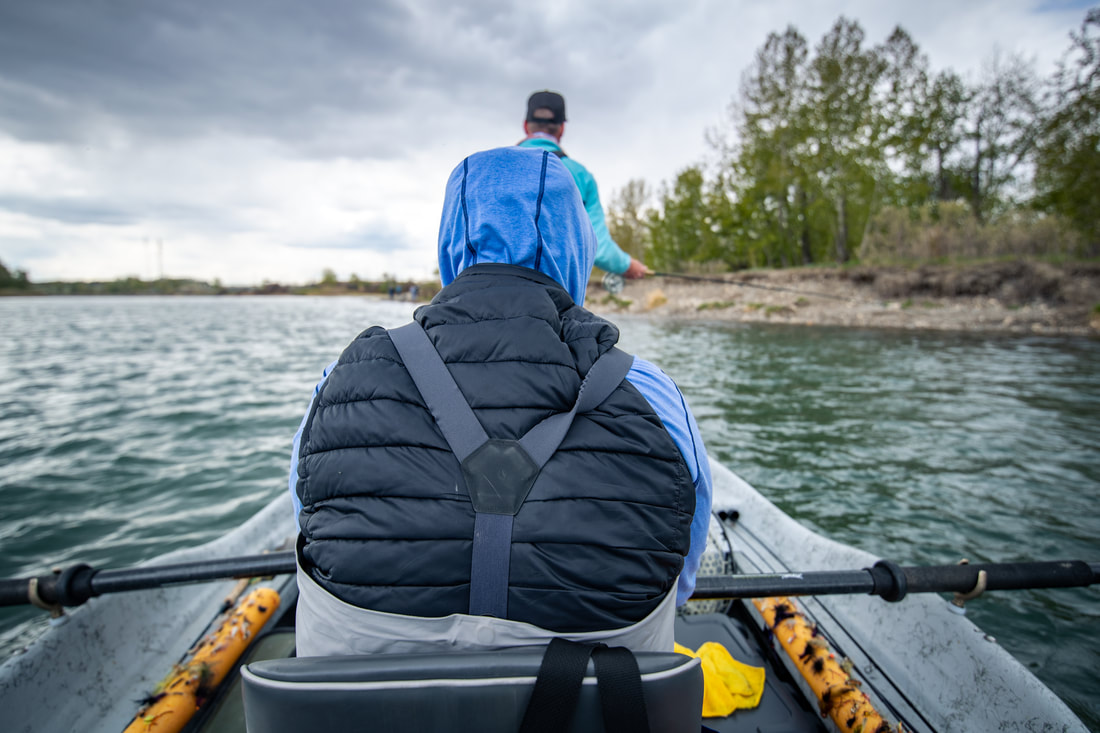
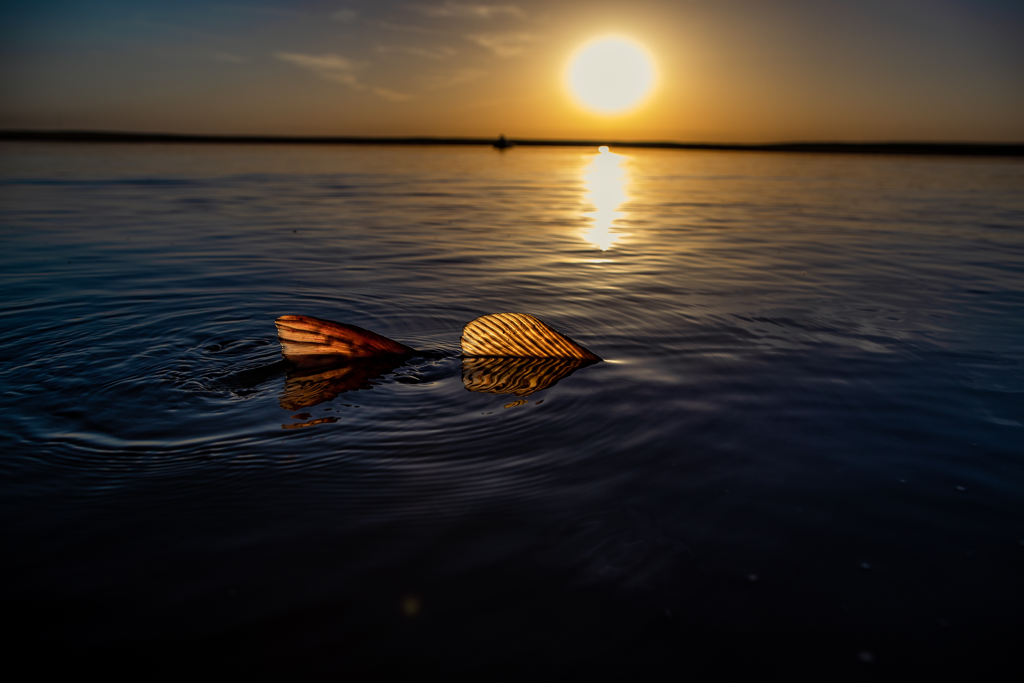
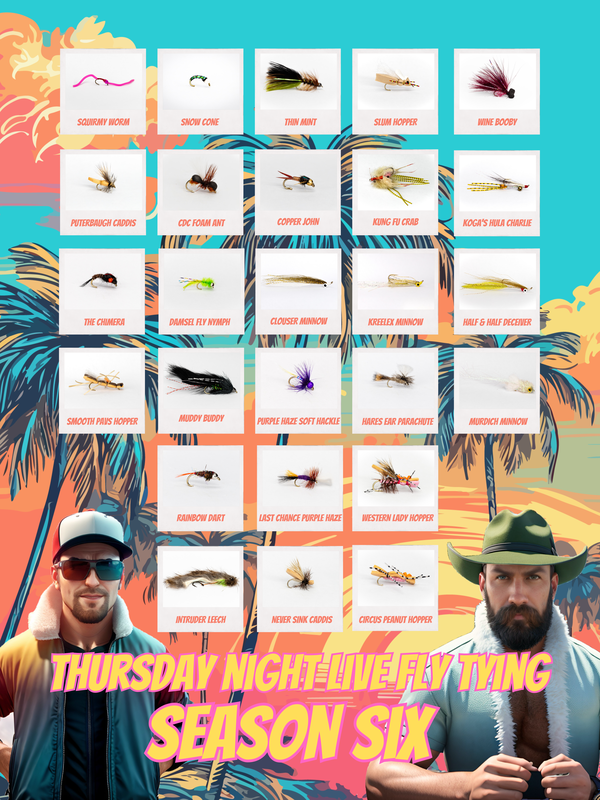
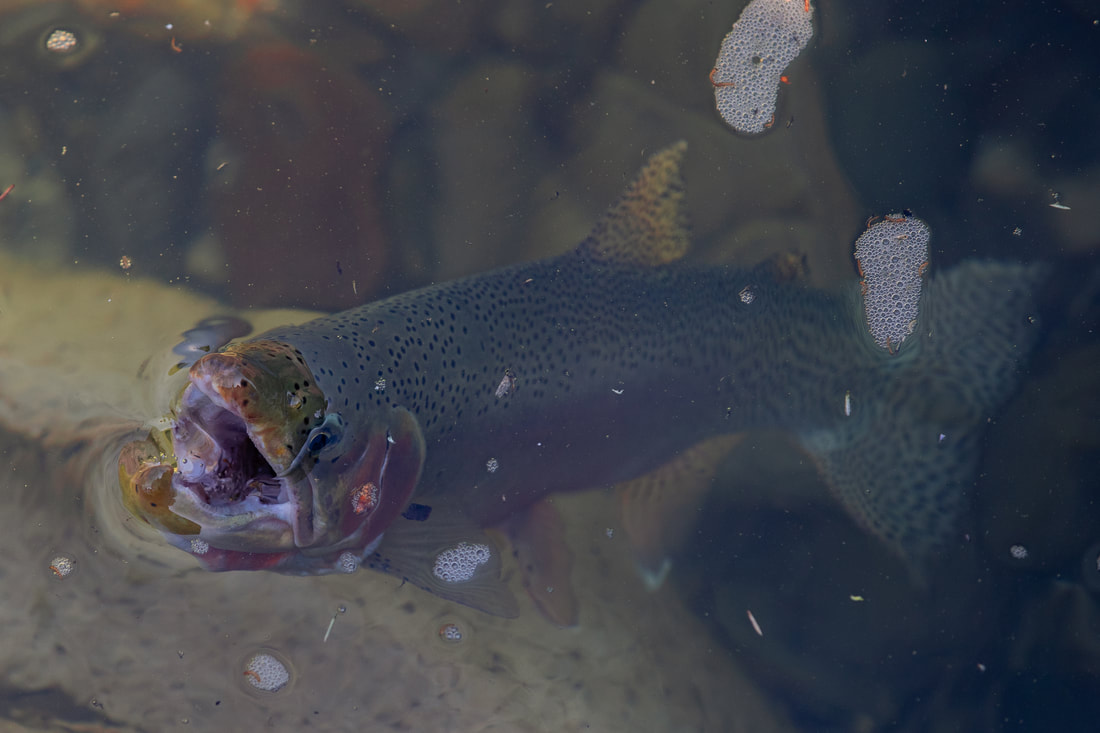
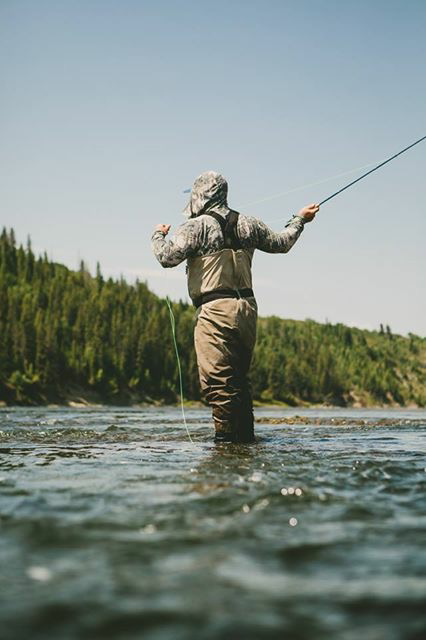
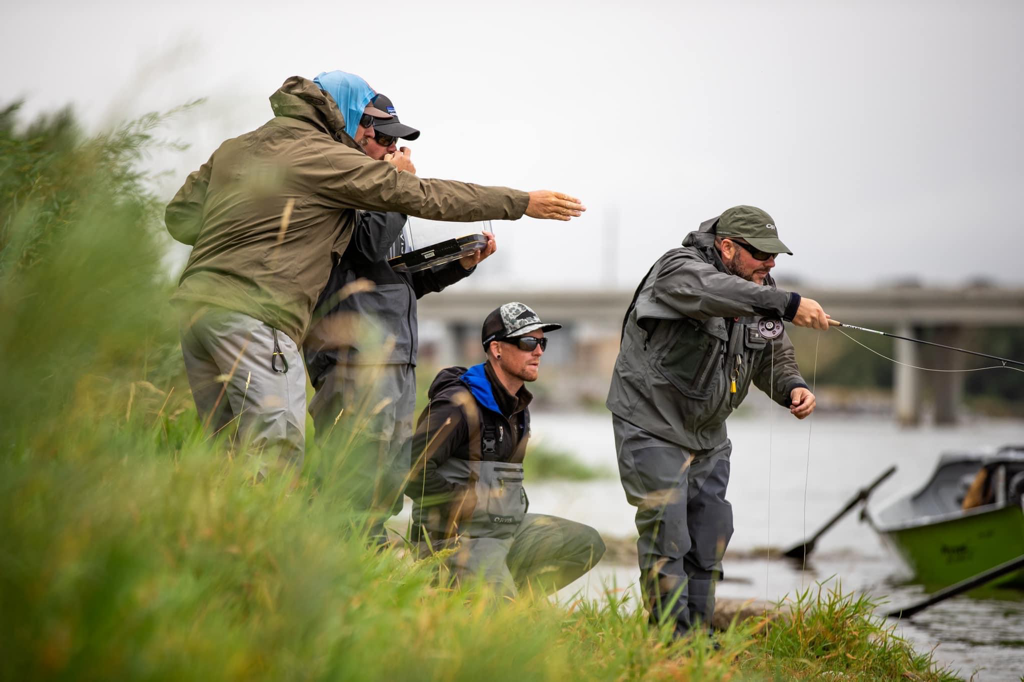
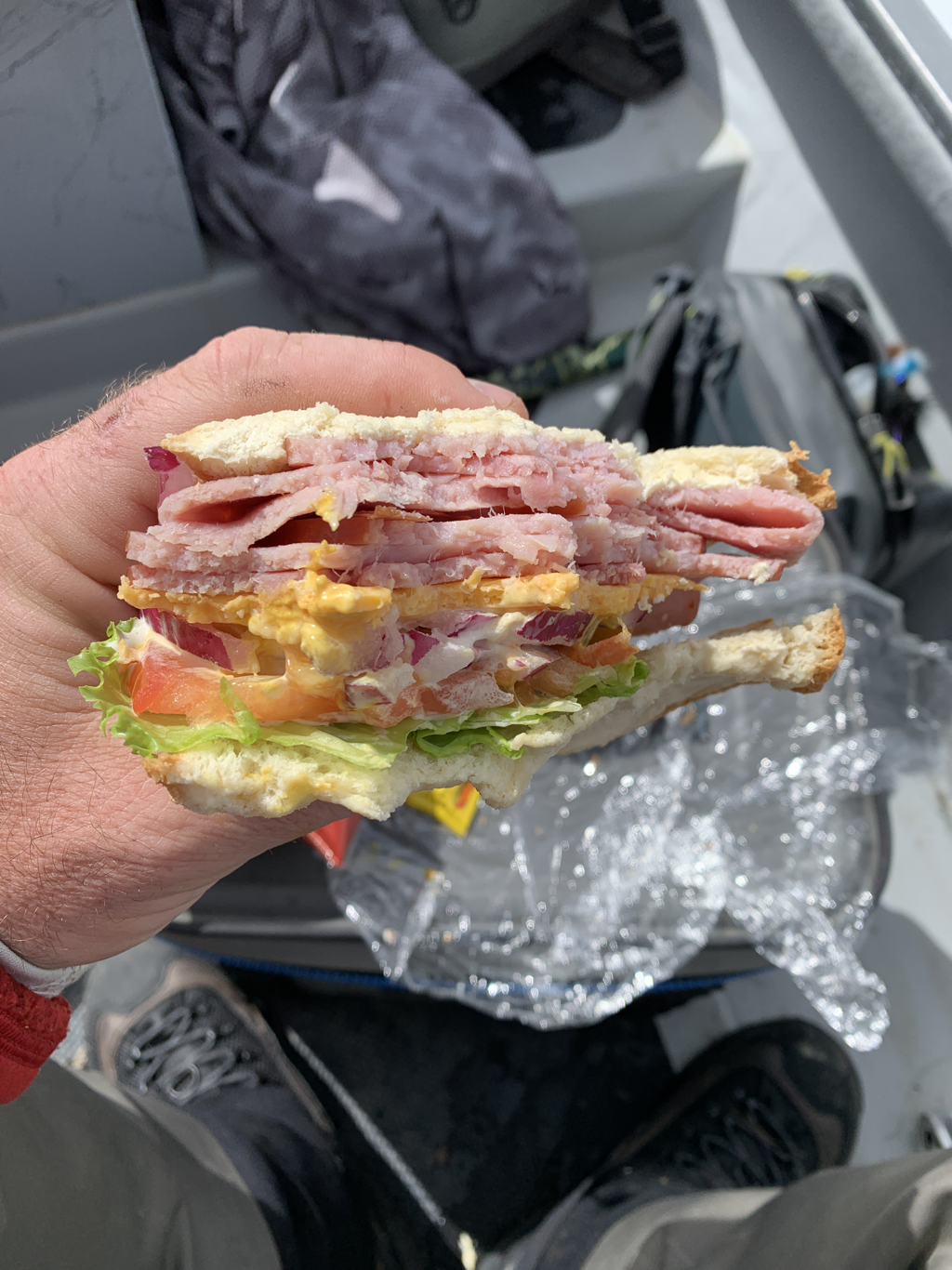
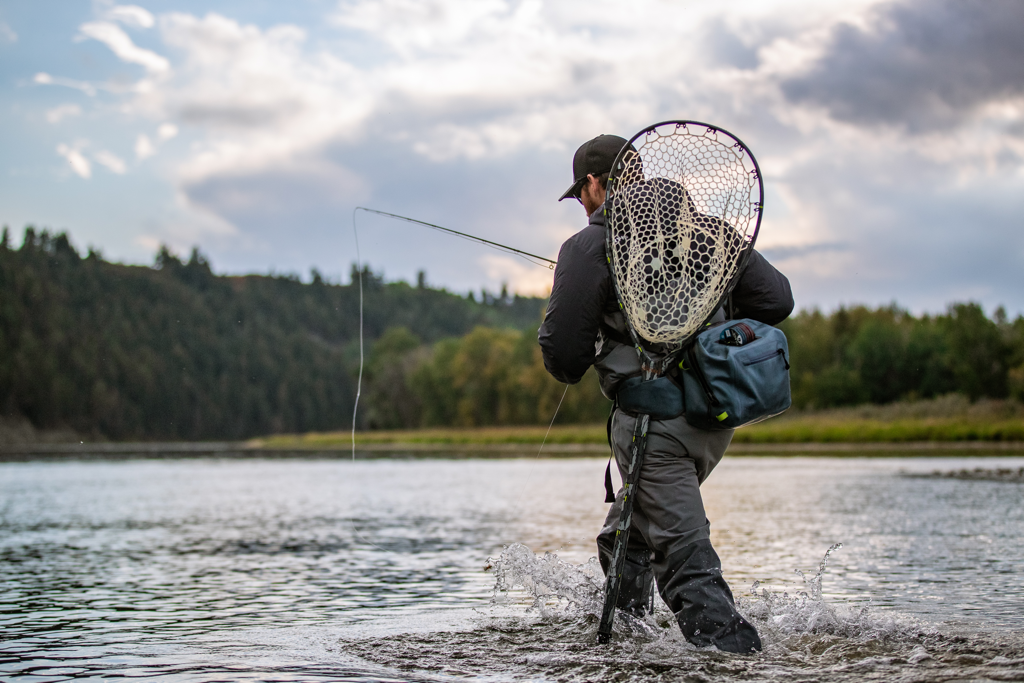
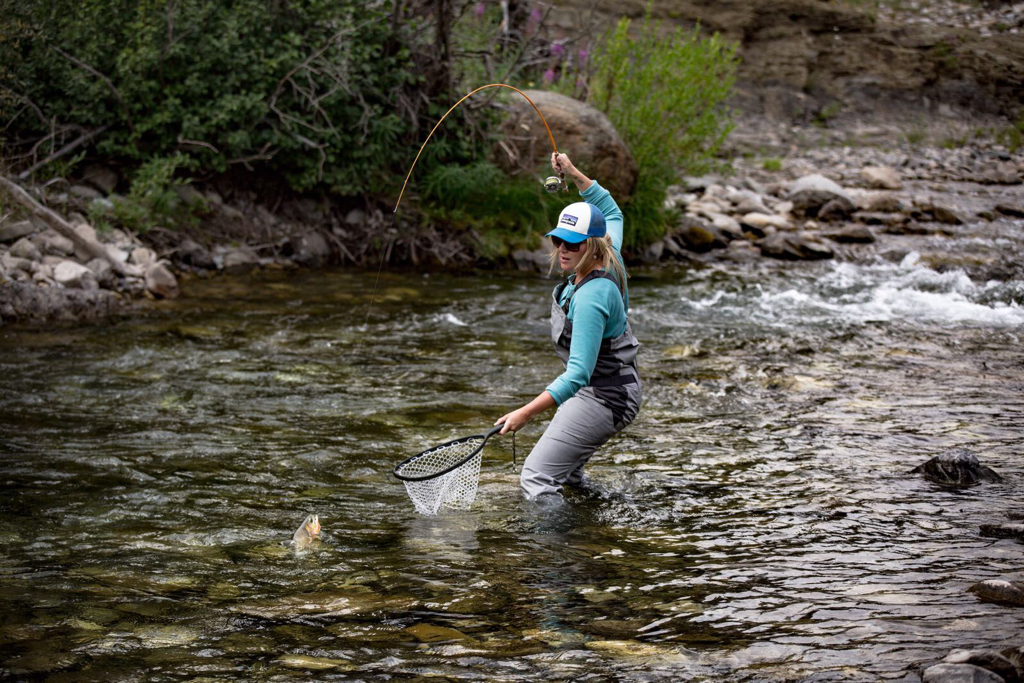
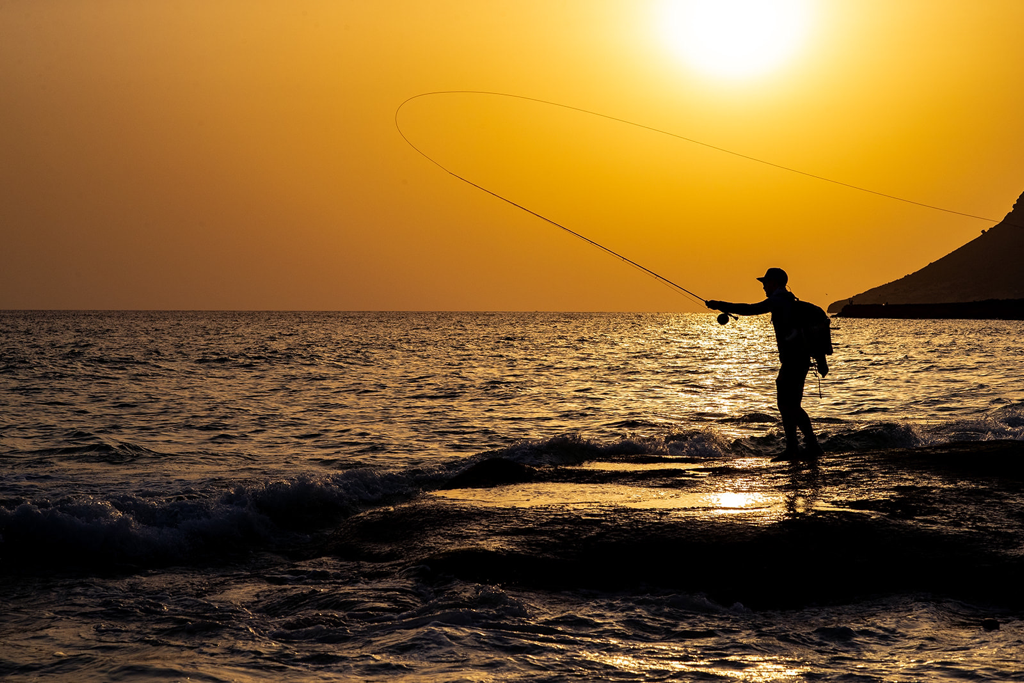
 RSS Feed
RSS Feed